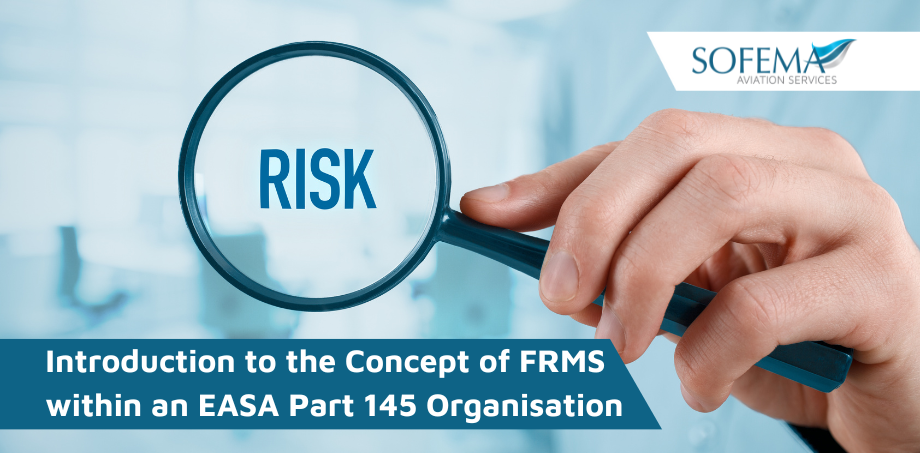Sofema Aviation Services (SAS) www.sassofia.com looks at the process driving an FRMS – Fatigue Risk Management System.
Introduction – ICAO Fatigue Risk Management System (FRMS) Definition
ICAO provides the following definition of FRMS:
- A data-driven means of continuously monitoring and managing fatigue-related safety risks, based upon scientific principles and knowledge as well as operational experience that aims to ensure relevant personnel is performing at adequate levels of alertness.
- An FRMS seeks to proactively identify opportunities to improve operational processes and reduce risk, as well as identify deficiencies after adverse events.
- The core activities are safety risk management and safety assurance processes.
- These core activities are governed by a documented FRMS policy and supported by FRMS promotion processes.
Fatigue has in fact been understood for many years as a significant human factor and a candidate of the “Dirty Dozen” as such the potential for a Fatigue Driven Human Factor Error affecting the effectiveness of Aircraft Maintenance Staff is real and ever-present.
- A Fatigue Risk Management System (FRMS) is a management system for an approval holder (Part 145) to use & mitigate the effects of fatigue throughout its organisation.
- An effective FRMS is data-driven and routinely collects and analyzes information and reports related to crew alertness as well as operational flight performance data. It helps to control the risk associated with both transient and cumulative fatigue.
Description of an Effective FRMS System
- An FRMS is a data-driven system, based largely upon scientific principles and operational knowledge that allows for continuous monitoring and management of safety risks associated with a fatigue-related error.
- An FRMS usually offers a fatigue mitigation tool that minimizes the acute and chronic sources of fatigue and manages the potential risks associated with fatigue.
- Fatigue should be considered as a potentially serious human factor exposure, and has the potential to affect many elements of the ability of flight crews to perform their duties.
Driving Performance Improvements Through an FRMS
A FRMS is part of a repetitive performance improvement process that leads to continuous safety enhancements by identifying and addressing fatigue factors across time and changing physiological and operational circumstances.
- The objective of the FRMS is to manage, monitor, and mitigate the effects of fatigue to improve flight crew member alertness and reduce performance errors.
- It clearly follows then that a data driven system requires “DATA” and so the paramount prerequisite is the understanding of the “risks” or “exposures” which are associated with fatigue and the honest reporting of any issues (heavily reliant on positive and effective corporate culture).
FRMS should be part of your SMS!
There is a great deal of similarity between FRMS and a Safety Management System (SMS).
Many of the processes read across from one system to the other.
- Typically an FRMS can operate very effectively within the framework of the organisations SMS.
- The prevention of fatigue through a workload management system is one of the essential requirements for a fully compliant Maintenance Repair Organisation (MRO).
Additional Considerations related to the Implementation of an Effective FRMS
- As with SMS, FRMS needs to achieve a realistic balance between the 2 “P’s” (Production and Protection) or more precisely to ensure we consider correctly the elements of safety, productivity, and costs.
- As with the SMS, the FRMS also has the potential to be organisationally optimizing to reduce risk and to seek opportunities for improvement.
- The FRMS must be documented and be able to gather data, analyse risk and take appropriate decisions. (A culture which supports a willingness to report is essential to the success of the system.)
- As would be expected within any Just Culture system it is normal to have a system which addresses violations in an appropriate manner to understand the “why” to ensure that both personally optimizing and organisationally optimizing violations are discouraged in the strongest possible way.
Next Steps
Follow this link to our Library to find & Download related documents for Free.
Sofema Aviation Services (www.sassofia.com) and Sofema Online (www.sofemaonline.com) offers Classroom, Webinar and online training covering all elements of EASA Part 145 Approval including Quality, Safety & Production Planning including the Development & Management of Fatigue Compliant Organisational Systems. For additional questions or comments please contact team@sassofia.com
Tags:
aviation safety, EASA, EASA Part 145, EASA Part 145 Organisation, FRMS, ICAO, Part 145, Safety Management, SAS blogs, SMS




